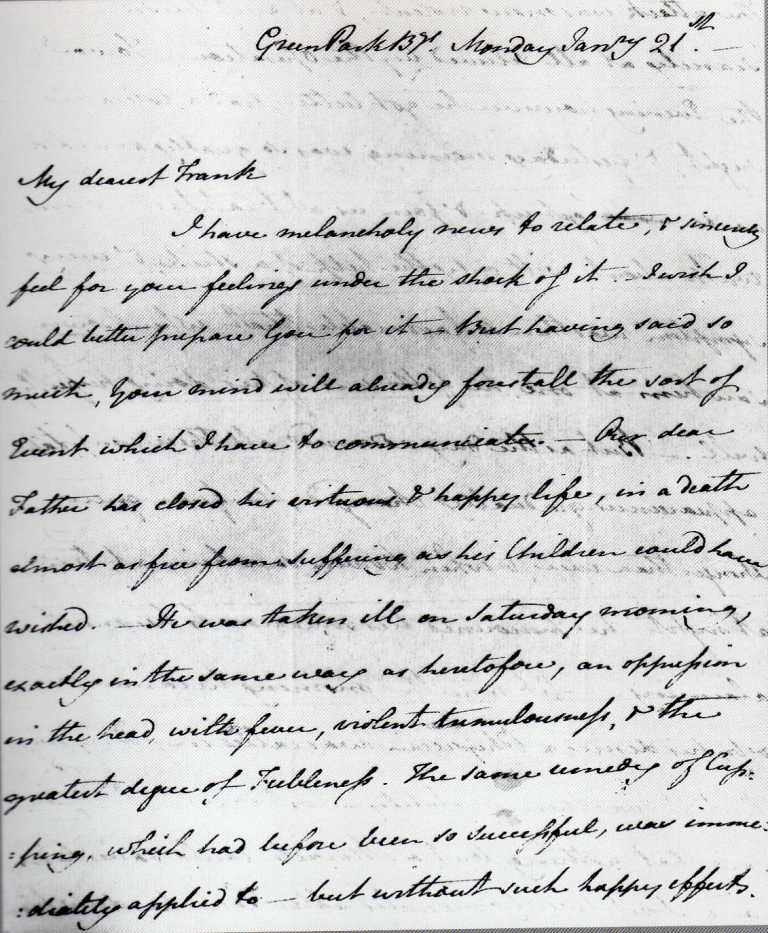Jane Austen
English Novelist (1775-1817)

Jane Austen was born in Hampshire, England, the seventh of eight children. Her father was a scholarly man who encouraged learning his children, while her mother was well known for her wit and stories. Austen began writing around 1787 and over the next five years filled three manuscript notebooks with her stories and prose. Her first novel, Sense and Sensibility, was published anonymously in 1811, followed two years later by Pride and Prejudice. The works were well received, and were highly favored by then Prince Regent (later George IV). Austen is often credited with having given the novel its modern character, dealing as she did with ordinary people and their inner lives
Handwriting of Jane Austen
Personality overview of Jane Austen
The large, round’middle-zone writing that can usually be seen in modern young women of Austen’s time is missing. In its place we find a well-organized writing with a focus on movement, with narrow margins, a strong right slant, and long lower zone. At the time of writing Austen was probably an active young woman, easily bored, whose interests encompassed a wide range.
Jane Austen Relationships
The writing has expanded spaces between letters, but the letters themselves are narrow, which suggests that Austen was a bit shy. Nonetheless, underneath that calm, pleasant demeanor was the lively, fun-loving spirit of someone whose restlessness could soon turn into frustration without the right outlet. The right slant and high degree of connectedness between letters shows that she was a good friend who could be counted on for a listening ear when it was needed.
Intellectual forces of Jane Austen
Austen had a quick wit, as seen in the long f-crosses, tall upper zone, and missing initial strokes. She had an intellectual bent, and would thoroughly investigate anything that caught her fancy. She adopted the Greek d, which is often referred to as the poet’s d, and is viewed as a sign of one who is good at writing—no surprise in this instanc*
Physical drives as visible in Jane Austen writing
Emotional and affectionate, Austen’s pastose writing shows a love for nat and all things beautiful. With the e> long lower zone we can be sure that kept many irons in the fire, was alvva active and ready for adventure. For same reason, her judgments would tend to be based on instinct, but since the upper zone is also well developed, >’ would be able to balance her gut reactions with principle.
Jane Austen Motivating forces
The tall, narrow upper zone, well-formed capital letters, and thick strc indicate someone who derived a ser of honor from the values that she learned from her parents. She had a strong conscience and, committed to seeing beauty and good in others, would be willing to make great sacrifices for what she believed in.
Source: Handwriting of the Famous and infamous by Sheila Lowe
